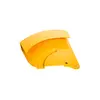Mobile:+86-311-808-126-83
Email:info@ydcastings.com
austenitic stainless steel castings
A Comprehensive Overview of Austenitic Stainless Steel Castings
Austenitic stainless steel castings have garnered significant attention in various industries due to their unique properties and versatile applications. These castings are primarily composed of stainless steel alloyed with significant amounts of chromium and nickel, providing remarkable corrosion resistance, high toughness, and excellent weldability.
One of the most notable characteristics of austenitic stainless steel is its face-centered cubic (FCC) structure, which grants it superior ductility and impact resistance, even at cryogenic temperatures. This makes austenitic stainless steel castings ideal for harsh environments, such as those found in chemical processing, marine, and food processing industries.
Austenitic stainless steels, such as the 304 and 316 grades, are widely used for their exceptional resistance to intergranular corrosion, which is crucial in applications where exposure to corrosive environments is inevitable. For instance, 316 stainless steel, which contains molybdenum, offers improved resistance to pitting corrosion in chloride environments, making it a preferred choice for marine applications and environments that require frequent exposure to saltwater.
The casting process for austenitic stainless steels involves the melting of raw materials, followed by pouring the molten metal into a mold. Various casting techniques can be employed, including sand casting, investment casting, and lost foam casting. Each method has its merits, with investment casting being particularly advantageous for producing complex shapes with tight tolerances and smooth surface finishes.
austenitic stainless steel castings

One of the challenges faced in the production of austenitic stainless steel castings is their susceptibility to solidification cracking. This issue can arise during the cooling process when the metal transitions from liquid to solid, particularly in thicker sections. To mitigate this risk, foundries often employ sophisticated heat treatment processes and precise control of the cooling rate. Additionally, the use of specific grades of austenitic stainless steel, with well-balanced compositions of nickel and chromium, can enhance the material's resistance to cracking.
In terms of applications, austenitic stainless steel castings are utilized in a wide range of industries. They are commonly found in the manufacturing of chemical processing equipment, heat exchangers, pumps, valves, and fittings, as well as food and beverage processing equipment like tanks and mixers. Their ability to withstand high temperatures and corrosive environments makes them suitable for nuclear reactors and pressure vessels as well.
Furthermore, the growing emphasis on sustainability and eco-friendly materials is driving innovation in the austenitic stainless steel sector. Manufacturers are exploring advanced recycling processes to recover stainless steel from scrap, reducing the need for virgin materials and minimizing environmental impact.
In summary, austenitic stainless steel castings represent a vital component in modern manufacturing and industrial processes, thanks to their exceptional mechanical properties and corrosion resistance. As industries continue to demand more durable and efficient materials, the advancements in casting technology and alloy development promise to enhance the performance and sustainability of austenitic stainless steels, ensuring their relevance for years to come.
-
Why Should You Invest in Superior Pump Castings for Your Equipment?NewsJun.09,2025
-
Unlock Performance Potential with Stainless Impellers and Aluminum End CapsNewsJun.09,2025
-
Revolutionize Your Machinery with Superior Cast Iron and Aluminum ComponentsNewsJun.09,2025
-
Revolutionize Fluid Dynamics with Premium Pump ComponentsNewsJun.09,2025
-
Optimizing Industrial Systems with Essential Valve ComponentsNewsJun.09,2025
-
Elevate Grid Efficiency with High-Precision Power CastingsNewsJun.09,2025











